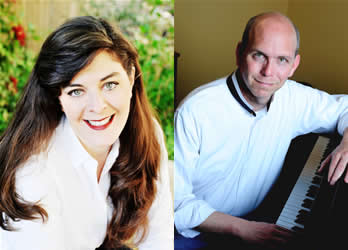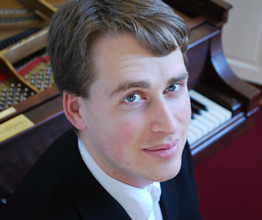“Digame,” the short declarative “tell me” musical motif from La Verdad (2003) by Rodney Waschka II, was also a unifying directive to the audience. Giving voice to ‘the others,’ Dr. Waschka, North Carolina State University Arts Studies director and composer, invited us to listen to new sounds and new voices — the ones we may choose not to hear. But art is neither easy nor always comfortable, and such was the case for this concert of North Carolina State University’s Arts Now Series, a collaboration of the Arts Studies Program and Music Department. The second program of their season was titled “Video and Electronic Music.” Visual selections and computer music were framed by the premieres of Italian composer Marco Nardelli’s Canto notturno (Di unpastore errante dell’Asia) (2006) and Ossi di sepia (Cuttlefish bones) (2006).
Nardelli’s works for flute and electronics reflect the composer’s wide interest in music from the baroque and world music to electro-acoustic. Incorporating a range of compositional tools and performance techniques, his sensual pieces were enchanting. Inspired by Giacomo Leopardi’s poetry, Canto notturno, he captures the stillness of the evening and silvery hues of the moon with sustained, gentle tones and simple melodic motifs. Using articulate trills and flutter tonguing, Nardelli effortlessly creates shimmering contrasts. The closing piece for flute and digital effects was equally compelling. An ‘organum-like’ harmonization in the second section and ‘cantus firmus’ flute line in the third section of Ossi di sepia function as subtle structural devices. A “Renaissance man” in his own right, composer and theoretical physicist, Nardelli demonstrates a rich distinctive style.
In the program notes, Jeff Shroyer wrote, “Waiting (2006) is a short meditation on repetition.” The iterative process, not unlike that used in Alvin Lucier’s 1969 “I Am Sitting in a Room,” is quite effective, the result ending in a field of white noise. Shell (2006) however, will be remembered for its social commentary. Based on the stories of local homeless individuals, Shroyer’s ‘in your face’ video composition forces the viewer to ask the question, “why do we study the homeless?” instead of “what decisions do we make that create this phenomenon?” Through cartoon-like figures in a montage of travel footage and monologue Shroyer evokes images of train-riding hobos of the Great Depression. Despite the wonders of technology and economic prosperity, why does homelessness persist?
Jerry Hunt’s Talk(slice):Duplex (c.1992) written a year before his death, serves as a representative work by the self-described “new music novelty act.” Remembered as an amazing, sometimes manic “shaman,” Hunt presents to us a video realization of an improvisational piece that becomes almost autobiographical. In the spirit of John Cage’s “Indeterminacy” (1959) with David Tudor, performers in dual monologues spoken on any number of topics occasionally result in spontaneous synchronicity. This may or may not have been the point, however. Whereas Cage and Tudor worked in separate rooms, the conversationalists in this piece perform face to face demonstrating the power of the nonverbal cues of everyday conversation. Despite our ineptness with words, the intonation, facial expressions and delivery of speech carry social meaning. In an interview with Gordon Monahan, Jerry Hunt remarks, “My mother says I was vaccinated with a phonograph needle. I love to talk, I just love to talk.” Waschka, who has performed this piece, remarked that the “music is in the process.” Hunt, as the ‘illuminati,’ is funny and engaging.
Etude (2002) by Pablo Furman and La Verdad (2003) by Rodney Waschka II (electronic computer music on recorded medium) and video Moving Target (2004) by Dennis Miller, serve as voices for the new millennium. The playful and sometimes ominous images and sounds made available through computer technology reflect the complex, frenetic, and sometimes beautiful world in which we live. Furman’s Etude is a sound study derived from a chant-like musical idea that morphs from its earthbound roots to an intergalactic cathedral piece. And Waschka, who satirically dedicates his work to “politicians and journalists,” crafted his piece by manipulating a simple phrase electronically, creating an array of sometimes funny, sometimes grotesque sounding aural images. Finally, like Leger’s Ballet mecanique (1924), Miller’s dance-like images in Moving Target delight the eye. A work in three sections “Vis-à-vis” is a kaleidoscope of ever-changing color, “Reflect” evokes images of Georgia O’Keefe’s sensual paintings, and “Release” conjures an image of a pulsating, disco-like sphere.
It was an extraordinary evening. Bravo!













